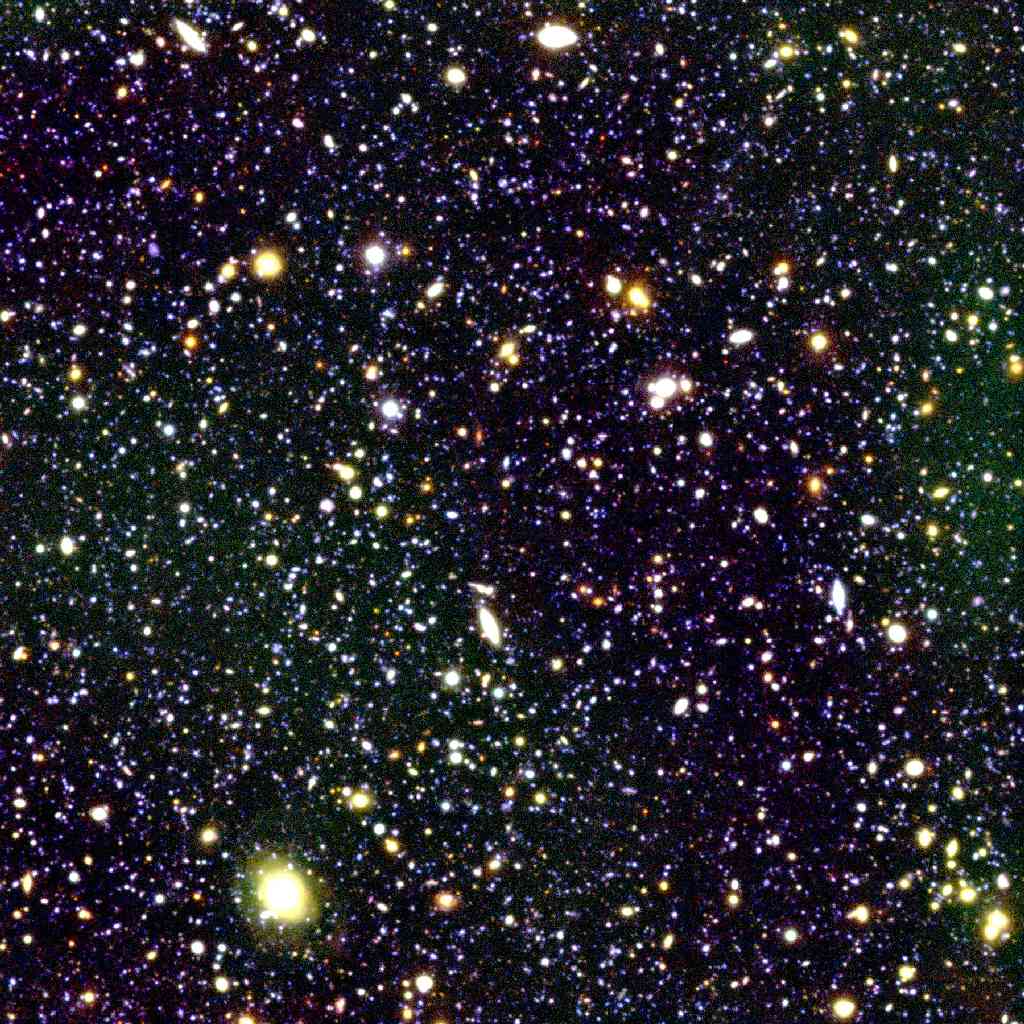BRI composite-image of the FORS Deep Field

|
|
|
1. The project
The FORS Deep Field (FDF) was established as a key project by the FORS
consortium
(Landessternwarte Heidelberg,
Universitäts-Sternwarte Göttingen and
Universitätssternwarte München) in order to make
efficient use of the guaranteed time granted to the consortium in
compensation for building the two FORS instruments attached to the VLT
telescopes. The PI of the FDF is I. Appenzeller.
In addition the FDF is one of the main topics within projects
supported by the Deutsche Forschungsgemeinschaft (SFB 439
"Galaxies in
the young Universe", Heidelberg; SFB 375
"Astro particle physics", Munic)
and the Volkswagen Foundation (I/76 520
"Kinematic evolution of
galaxies", Göttingen).
2. Scientific motivation
Undoubtedly, the Hubble Deep Field North
and follow-up observations with Keck were
of particular importance to improove our knowledge of galaxy evolution
in the redshift range z = 1-4. However, due to its relatively small field of
view (~5.6sq.arcmin.) the results obtained are subject to
large-scale variations and limitations due to small samples. The main aim
of the FDF is to probe the galaxy evolution up to z~5. The FDF
programme has been carried out mostly with the ESO VLT and FORS
instruments at a site, which offers excellent seeing conditions and
allows imaging to almost the depths of the HDFs. The larger field of
view compared to the HDFs (about 4 times the combined HDFs) alleviates
the problem of the large-scale structure and results in larger samples
of interesting objects. Moreover, spectroscopic follow-up studies with
FORS can make full use of the entire field. Using the FORS2
MXU-facility, up to ~60 spectra of objects down to
m_I = 25 can be taken
simultaneously.
3. Characteristics of the FDF
The location of FDF was chosen according to restrictions typical for
classical pencil-beam surveys. Amongst them are low galactic
extinction, absence of bright radio and x-ray sources, low HI column
density and FIR cirrus emission, and the absence of bright stars in the
field. To maximize the observability of the FDF from the VLT-site a
region near the south galactic pole was chosen. To study the IGM along
the linie-of-sight a high-redshift (z > 3) Quasar had to be incorporated.
In the end a region containing the QSO Q0103-260 (z = 3.36) was chosen
as the FDF. The field selection is described in Heidt et al. (2003).
The main characteristics of the FDF are summarized in Table 1.
Table 1 Characteristics of the FDF
|
Field center
|
1h 6m 3.6s
-25° 45' 46" (2000)
|
|
mean E(B-V)
|
0.018
|
|
HI column density
|
1.92 • 1020 cm-2
|
|
Radio sources (NVSS)
|
non with flux > 2.5 mJy
|
|
IRAS Cirrus (100 μm)
|
0.035 Jy
|
|
Bright stars (<5 mag)
|
none within 5°
|
|
|
|
|
|
